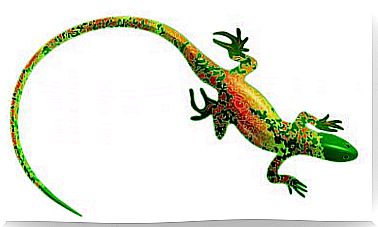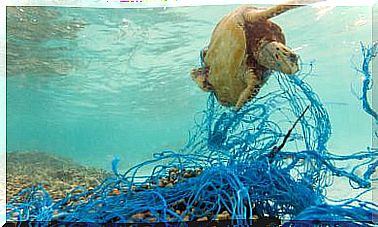Lark: Conservation Of The Species

The lark is one of the 26 species of Iberian steppe birds. This group is characterized by forming their nests on the ground, by their typically terrestrial locomotion and by having cryptic coloration, very similar to their environment.
An emblematic case is that of the ricoti lark ( Chersophilus duponti ), since the entire European population lives in Spain. Famous authors such as Chaucer and Shakespeare have highlighted this little bird in literature – largely due to its morning song – symbolizing sunrise in their works. In this article we will learn a little about life and the dangers that this little singer faces.
Characteristics of the lark
The ricotí lark is a member of the family of birds called aláudidos, belonging in turn to the passerines, or songbirds. They are small in size, around 11 centimeters, which together with their brownish plumage, helps them go unnoticed.
In fact, its camouflage is so successful that, among bird watchers, it is known as the ‘ghost of the wasteland’. The lark prefers open spaces, the great plains, in arid and semi-arid environments.
In Spain we find it mainly in the Layna páramo or in the Ebro valley, but also in the Rincón de Ademuz and wherever there are rosemary, Rosmarinus officinalis .
Singing
The lark is a morning songwriter, concentrating its song at the first hour before dawn. His trill is very melodious and he performs it with great vehemence. The varied vocalization includes alarm and stress calls, but the most used for their detection are songs and territorial claims.
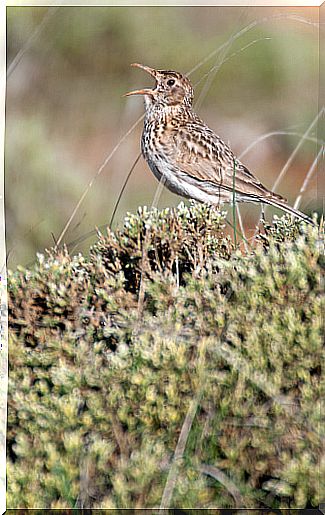
Males sing on the fly, thereby defending their breeding grounds and attracting mates. Although singing in females has been reported for other species of lark, in the case of the ricoti lark there is no evidence that females sing.
Lark feeding
This little bird is omnivorous and feeds when it is on the ground. Its favorite food is insects, of which it eats a wide variety. It also eats seeds, grasses, leaves, shoots, fruits, and flowers.
Nest and reproductive biology
As we mentioned before, the ricotta lark builds nests on the ground. They locate the nests in such a way that they are protected by brush, tufts of grass, clods of earth or stones. The shape of the nest is cup.
Regarding the number of eggs per laying, it is known that it ranges from three to five units, and that the female incubates them alone. Although information on incubation is limited, it is estimated to last 12 days. In addition, the chicks leave the nest after a period of 8 days.
The breeding season of the species runs from late March to early July. These birds remain in the breeding areas the entire year.
The lark, classified as endangered
The species has suffered a population decline of 4% per year for at least the last 10 years, so it is a kind of priority attention. At the national level, the lark is classified as an endangered species in the Red Book of Birds of Spain. The criteria used for the classification include the population size and the area of its distribution.
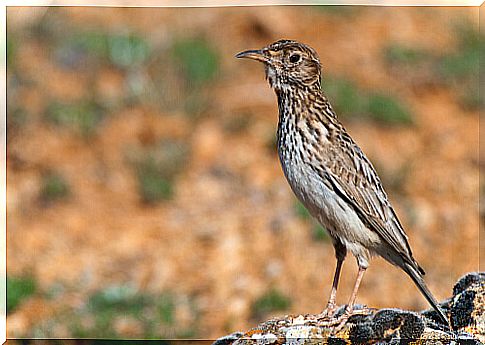
Thus, the classification of the ricotí lark is due to the fact that the surface of its area of occupation is less than 500 km 2. In addition, its population is very fragmented, since most of the individuals are distributed in only about 14 localities.
Additionally, it is classified as a vulnerable species in the Spanish Catalog of Threatened Species. At European level, it is included in Annex I of the Birds Directive (Dir. 79/409 / CEE) as a species subject to conservation measures.
Causes that violate the lark
Experts consider that the group of steppe birds is the most threatened group in Europe and with the highest risk of disappearing in the coming decades. Among them, the ricotí lark is the bird that is suffering the greatest decline in Spain.
It is undeniable to point out the change in weather conditions as an unfavorable condition. Other causes of equal weight are obviously food shortages and loss of habitat.
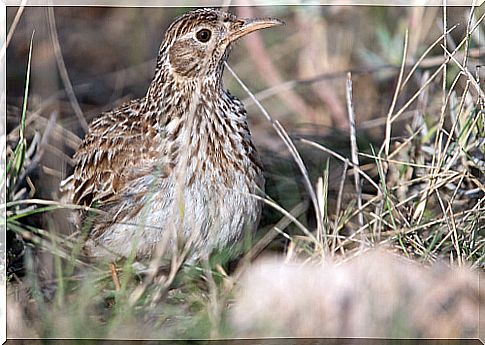
The lark depends on open, dry and warm areas with low and uneven vegetation; such niches are found less and less in the cultural landscape of Central Europe. Human activity, through agricultural intensification, has modified the habitats of the ricoti lark throughout Europe. As a consequence, the steppe has suffered deterioration and diminution of its area.
The steep decline in populations of the ricoti lark has raised alarms about the urgent need to develop a national conservation strategy. The strategy includes measures to protect stocks and ensure their long-term viability.
The conservation strategy of the ricoti lark includes protecting the areas where the species lives, avoiding new impacts in these areas, and conducting habitat management. Furthermore, it is considered essential to carry out a monitoring program based on effective population census methods.
Habitat management, an inescapable obligation
Experts have been raising the duty to protect, as far as possible, a series of potential habitat patches that could act as natural corridors between the remaining populations and allow recolonization events to take place.
Experts estimate that 200 hectares is the minimum desirable area for habitat patches that host populations of ricotta lark. Recently, the situation of this endangered bird has been favored by a research and conservation program of the species by the Spanish government.
